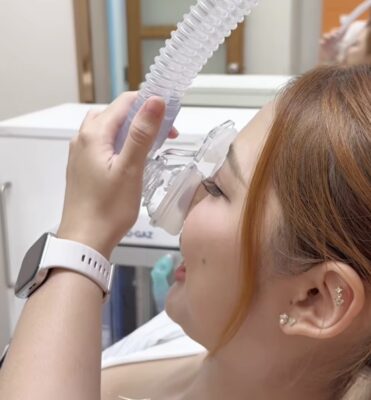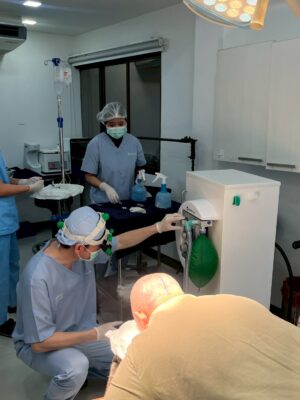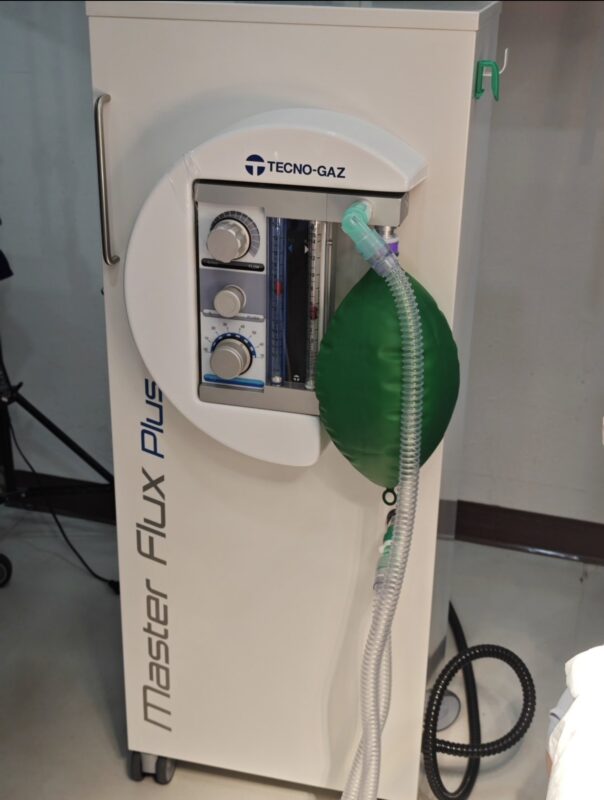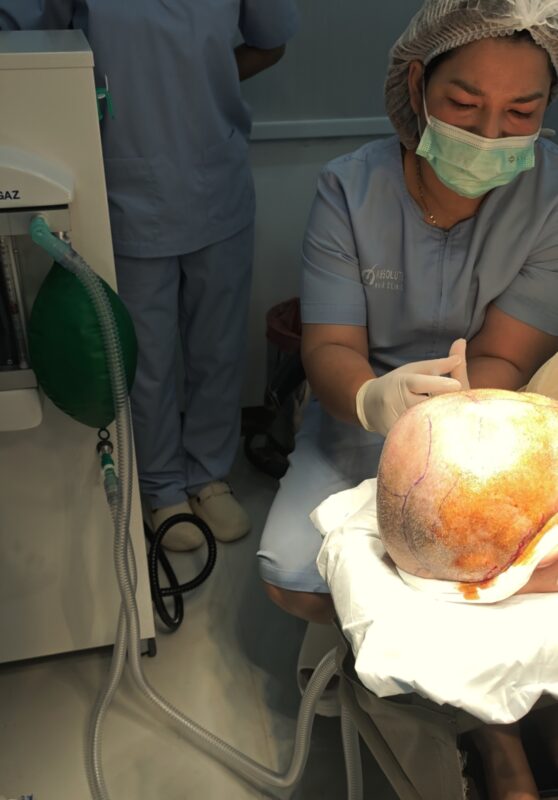Using Nitrous Oxide (N₂O) During Local Anesthetic Injection in Hair Transplant
Hair transplant procedures, such as FUE (Follicular Unit Extraction) or FUT (Follicular Unit Transplantation), require local anesthesia to ensure patient comfort. For many patients, the injection of local anesthetics is the most uncomfortable part of the procedure. To make this experience more pleasant, nitrous oxide (N₂O)—commonly known as “laughing gas”—can be used as an adjunct.
How N₂O Works
Nitrous oxide is an inhaled anesthetic gas with mild analgesic and anxiolytic (anti-anxiety) effects. When a patient breathes a controlled mixture of N₂O and oxygen through a nasal mask:
Pain perception decreases: N₂O alters the transmission of pain signals in the central nervous system.
Anxiety is reduced: It acts on brain receptors to induce relaxation, lowering fear of needles.
Fast onset and offset: Effects begin within minutes of inhalation and wear off quickly once stopped, with no residual drowsiness in most patients.
Importantly, nitrous oxide is not a substitute for local anesthesia—it works synergistically to make the injection process much more tolerable.



Benefits of N₂O in Hair Transplant Local Anesthetic Injections
1. Reduced Injection Pain
Diminishes the discomfort of multiple local anesthetic shots on the scalp.
2. Lower Anxiety and Stress
Helps patients who fear needles or medical procedures feel calmer and more cooperative.
3. Improved Patient Experience
Makes the start of surgery smoother, often leading to higher overall satisfaction with the transplant.
4. Safe and Quick Recovery
Unlike oral sedatives, patients remain conscious, can respond normally, and recover almost immediately after inhalation stops.
5. Non-invasive
Delivered via a small nasal mask, requiring no IV line or additional injections.


Possible Side Effects of N₂O
While nitrous oxide is considered very safe when administered properly, some mild and temporary side effects may occur:
Dizziness or lightheadedness
Nausea or vomiting (rare, usually with higher concentrations or prolonged use)
Tingling in hands or feet
Euphoria or mild drowsiness
Headache (uncommon, usually relieved by breathing pure oxygen for a few minutes afterward)
N₂O is not recommended for patients with certain medical conditions such as severe respiratory issues, middle ear problems, or vitamin B12 deficiency. A preoperative assessment ensures safety.
Conclusion
Using nitrous oxide during local anesthetic injections in hair transplant procedures significantly improves patient comfort by reducing pain and anxiety. Its rapid onset, safety profile, and quick recovery make it an excellent tool to enhance the overall surgical experience. When administered by trained staff, N₂O provides a simple, effective, and patient-friendly solution to the most uncomfortable part of hair transplantation.


